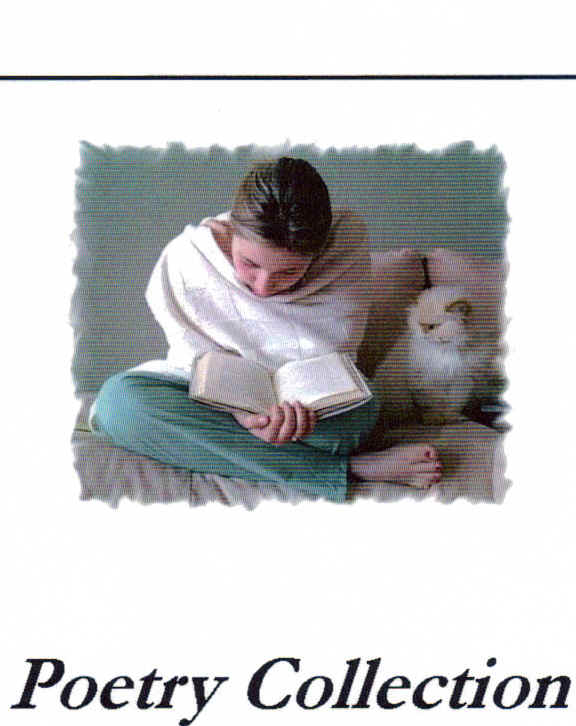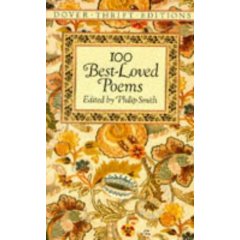|
Poetry
Collection

Diane Anjoue Wanting to Be Lost Within
     Dreamy Elegance, March 15, 2006
Dreamy Elegance, March 15, 2006
"Within you I lose myself, without you
I find myself wanting to be lost again..." ~Anonymous
Diane Anjoue's beautiful spirit infuses her poetry with the
sheer perfection of description. Romantic elegance often turns
to profound conclusions as in "Mianzi." Silence is a
place to think by a screen window while it rains and the ebb and
flow of longing is ever present. She goes beyond "my heart
is yours" and declares: "My heart is within you."
As she captures moments with her creative world, you start to
want to be lost within each poem filled with a rhythm that
invites many sentences to be read a second time just for the
pleasure of playing with words.
"Adobe markings
steeping
in a misty bath of tranquility,
Nature's orchestra
sweeping me under it's nightcap spell
Sandalwood and chamomile
gently enveloping my senses,
Humility,
awash in a pool of tepid relaxation,
dissipating" ~Ritual Cleansing
I am amazed by her poem "Ritual Cleansing." Here she
connects with an invisible realm where you are cleansed by the
thought of another human being as if there was no separation
between bodies, but only a flowing of the soul from one moment
to the next. She continues this theme in "Carried
Away" when she is showered with tears. The images show a
high level of awareness where I often wish I could live. She is
honest, caring, soft, brave, filled with longing and often
dreamy in her strength.
"Rain drenched hair, sun kissed skin
swallowed by imperfect normality...
Cherry stained lips, dew dropped lashes
tainted with laughable purity..." ~Separate Lives
"Weaving Gypsy Spells" is a poem highlighting images
of Autumn, turquoise seas, sandalwood and seaside storms. The
poem in itself is delicious with images of baklava and vanilla
and then warms beautifully with a story of family life and
taking care of her baby while they all eat breakfast in bed.
Diane Anjoue finds a certain ecstasy in the sheer beauty of
description. She goes beyond poetry and creates moments of
perfection filled with the scents of essential oils, delicious
foods and whispering nights. Her heart is ever present, always
connected to the words she uses as if they are an extension of
her soul melting into the pages like lavender honey. This is a
woman who has loved deeply, tasted emotional perfection and
experienced the depths of romantic longings. I am comforted by
this beautiful invitation to mingle with her world for moments.
Poetry Collection de Jolie-Laide is one of the most beautiful
books of poetry I have ever found.
~The Rebecca Review

100 Best-Loved Poems
 Poetic Journey through Time, September 1, 2006
Poetic Journey through Time, September 1, 2006
"The fog comes
on little cat feet.
It sits looking
over the harbor and city
on silent haunches
and then move on."
~Fog, Carl Sandburg
100 Best-Loved Poems presents poems from the Middle Ages to the
20th Century. The poets are all familiar, but the poems are more
varied and quite a few are poems I'd never read before. In a
compilation like this, you'd imagine to find quite a few
familiar favorites from high school or college and those did
appear throughout.
There is comfort in reading poems we tried to understand in
school, but didn't have the emotional maturity to fully digest.
Now upon reflection, how could we have truly understood "To
His Coy Mistress" at 16, a poem born of mature desire. Now
nearing forty, I feel I can linger in these poems enjoying every
nuance.
This classic collection includes brief introductions to each
poet and includes some information on poetic forms. In the
section of Ballads, you can hear the singsong rhymes as you read
so the first poem was a good choice.
The poets include: Lord Randal, Sir Patrick Spens, Sir Thomas
Wyatt, Christopher Marlowe, William Shakespeare, Thomas Nashe,
John Donne, Ben Jonson, Robert Herrick, George Herbert, Edmund
Waller, John Milton, Richard Lovelace, Andrew Marvell, Henry
Vaughan, Thomas Gray, William Blake, Robert Burns, William
Wordsworth, Samuel Taylor Coleridge, Leigh Hunt, Lord Byron,
Percy Bysshe Shelley, William Cullen Bryant, John Keats Ralph
Waldo Emerson, Elizabeth Barrett Browning, Henry Wadsworth
Longfellow, John Greenleaf Whittier, Edgar Allan Poe, Oliver
Wendell Holmes, Alfred, Lord Tennyson, Robert Browning, Walt
Whitman, Matthew Arnold, George Meredith, Emily Dickinson,
Christina Rossetti, Lewis Carroll, Thomas Hardy, Gerard Manley
Hopkins, Robert Louis Stevenson, A.E. Housman, Rudyard Kipling,
William Butler Yeats, Edwin Arlington Robinson, Robert Frost,
Carl Sandburg, Wallace Stevens, William Carlos Williams, Ezra
Pound, Marianne Moore, Edna St. Vincent Millay, Wilfred Owen,
E.E. Cummings, W.H. Auden and Dylan Thomas.
While the poems are not overly culturally diverse and seem to
focus on English and American poets, there is a wonderful early
translation for "The River-Merchant's Wife: A letter."
It was fun to find "The Tyger" by William Blake and
Lewis Carroll's "Jabberwocky" makes a little more
sense to me now. "Ode on a Grecian Urn" makes more
sense when you can see a picture. Percy Bysshe Shelley's "Ozymandias"
is a reminder of time's destructive powers and William
Wordsworth's "I Wandered Lonely as a Cloud" speaks of
the human condition and the way we connect with nature. William
Butler Yeats has a different take on age in "When You Are
Old." He speaks more of appreciation than destruction.
"For oft, when on my couch I lie
In vacant or in pensive mood,
They flash upon that inward eye
Which is the bliss of solitude;
And then my heart with pleasure fills,
And dances with the daffodils."
~I Wandered Lonely as a Cloud, William Wordsworth
The selections by Emily Dickinson are playful and they made me
want to read more of her poems. There are quite a few life
lesson poems that are profound in content, like "If-"
by Rudyard Kipling, where he speaks of what it takes to me a
man. Robert Frost also presents intriguing notions and life
choices in his "The Road Not Taken."
This collection offers recollections of poetry you may remember
and introduces quite a few poems that are less familiar. John
Donne's Holy Sonnet XIV was new to me, although I had read Holy
Sonnet X..."Death be not proud..."As far as romance
goes, Ben Johnson's "To Celia" stands out as does
Robert Burns' "A Red, Red Rose."
100 Best-Loved Poems is a lovely classic collection and it is
nice to have all these poems in one book for future
contemplation. I will have to agree with everyone else who made
comment as to the lack of cultural variety. For this, you may
want to seek out poetry collections by Sam Hamill. For me, this
was an inexpensive way to expand my poetry knowledge and to
remember some of the poems I learned in high school and college.
"The woods are lovely, dark and deep.
But I have promises to keep,
And miles to go before I sleep,
And miles to go before I sleep."
~Stopping by Woods on a Snowy Evening, Robert Frost
~The Rebecca Review
|

Toile De Jouy
     Perfect Gifts for Friends who Love to Write, July 18,
2004
Perfect Gifts for Friends who Love to Write, July 18,
2004
Reviewer: The
Rebecca Review
Painted cottons were developed in India in the fourteenth
century. When printed and painted beautiful cottons appeared
from India in the seventeenth century, a French embargo was
placed on the import, manufacture, and sale of foreign fabrics.
Jouy is an area of France that is very famous for making
Toile fabrics. Jouy-en-Josas is a little town near Versailles,
southwest of Paris. The Manufacture Royale de Jouy was founded
in Joy-en-Josas along the Bièvre river. This factory once
employed 1,300 workers who printed miles of fabric. The fabric
was printed using copper sheets, which allow precise drawings
that are much more detailed than those carved on wood.
Jean-Baptiste Huet (1745-1811) was the artist who's drawings
for the copper sheets were later called toiles de Jouy (Jouy
fabrics). Soon, a carved copper roll printed 5,000 meters of
fabric in one day. Hippolyte le Bas, Jean-Louis Demarne, Horace
Vernet were some of the famous painters who loved designing for
those interested in Egypt and mythology. While the factory
closed, some new prints are still made by using old drawings
from the Textile Museum in Mulhouse.
I've recently given away some of these beautiful Gibbs Smith
cards to friends who love to write, but this is a box I'm
keeping. These "Toiles De Jouy" cards are beautiful
and are printed with reproductions of 18th-century French fabric
and wallpaper designs. The box itself is very collectable and
I'm thinking of filling it with letters from a friend.
The box has a hinged lid and contains 20 note cards and 20
envelopes. There are four designs and five cards printed with
each design.
The first card is bursting with pink flowers, tiny scenes
from far-away lands and an elephant, bird and interesting deer
creature. Each picture is framed in a pink circle and the
flowers meander around the frames.
The second card is highly decorative and you can see the
fabric texture and delicate, almost antique quality of the
monochromatic slate blue designs set against the vanilla fabric.
My favorite and third card in this collection is a scene of
flowers and leaves with animal heads. It is like the flowers and
leaves have their own personalities or animals are being born
from mysterious and unnamed species of plants. A green and pink
flower burst with stars while mythical beast hides behind a
sharply edged leaf. I especially noticed the seven-pointed star
flowers and the intricate and imaginative flower designs in
purple, fuchsia and dark green.
The last card has pastoral scenes and contains pictures of
angels, roosters, children dancing in circles to music and
outdoor retreats all in a gray print.
You may also enjoy: Toiles de Jouy by Betty Lou Phillips or
look for the complete history of these textiles in Toile de Joy
by Melanie Riffel.
If you love these cards, you can also still purchase fabrics
online and some of the "ancient" prints are stunningly
beautiful.
|
|